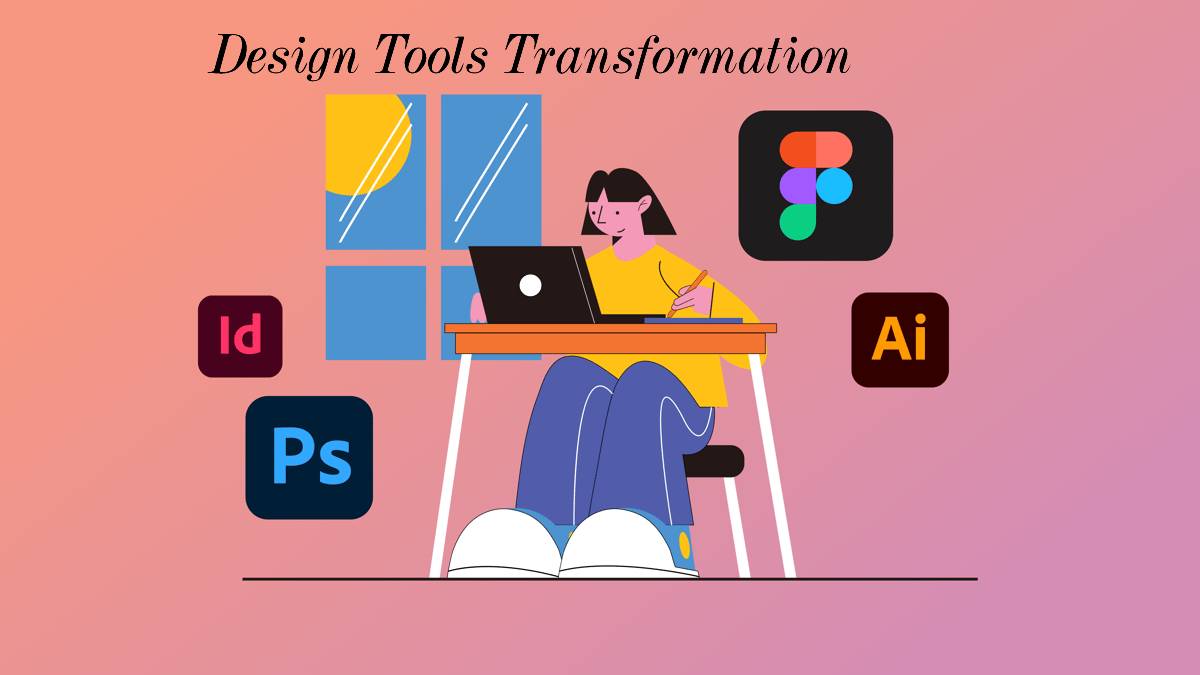
Design tools have revolutionized the way designers work and create. From sketching to finalizing, the process of design has been made much simpler and efficient with the help of these tools. The industry has seen a tremendous transformation in recent years, and a major credit goes to the advancements in design tools. In this article, we’ll take a look at the top 5 design tools that transformed the industry and changed the way designers work.
Below are the Top 6 Design Tools:
- Adobe Creative Cloud
Adobe Creative Cloud is a suite of design tools developed by Adobe Systems. It is a cloud-based platform that provides access to a range of Adobe’s design tools, including Photoshop, Illustrator, InDesign, and more. The Creative Cloud has become a staple for designers in all areas of design, from print to digital, and has become an essential tool for many design agencies and companies. With its intuitive interface and vast array of features, Creative Cloud allows designers to quickly and easily create high-quality designs.
- Sketch
Sketch is a vector graphics editor and digital design tool that was first released in 2010. It has since become a popular tool among UI and UX designers, and has even replaced Adobe Illustrator for many designers. Sketch has a simple and clean interface that allows designers to work quickly and efficiently. Its vector graphics capabilities allow designers to create scalable designs without losing quality, making it a great tool for responsive design. In addition, Sketch has a large community of developers and designers who have created a variety of plugins to extend its functionality, making it even more powerful.
- Figma
Figma is a cloud-based design tool that was launched in 2016. It is a web-based tool that allows designers to collaborate in real-time, making it a great option for remote teams. Figma has a simple and clean interface, similar to Sketch, but with added collaboration features. With Figma, multiple designers can work on a single design project at the same time, making it easier for teams to collaborate and communicate. In addition, Figma has a vast library of templates and plugins, making it a versatile tool for designers of all skill levels.
- Canva
Canva is a graphic design tool that was launched in 2012. It is a cloud-based tool that is simple and easy to use, making it a popular choice for non-designers. Canva has a wide range of templates and design elements, making it a great option for those who need to create designs quickly and easily. With Canva, users can create designs for a variety of purposes, including social media graphics, presentations, and more. It is a great tool for those who are new to design or for those who need to create designs on a tight deadline.
- InVision
InVision is a digital product design platform that was launched in 2011. It is a cloud-based tool that allows designers to create interactive prototypes and animations. InVision is a great tool for designers who want to create interactive designs, as it allows them to bring their designs to life with animations and interactions. With InVision, designers can create prototypes that can be tested and refined before being developed into a final product. This makes it a great tool for designers who want to create a more immersive experience for their users.
- Photopea
Photopea is a cloud-based graphic design tool that offers similar functionality to Adobe Photoshop. It allows designers to create and edit graphics, images, and designs in a user-friendly interface. Photopea is a great alternative to Adobe Photoshop, as it is free and can be used directly in a web browser without the need for any downloads or installations. It supports common image formats such as .PSD, .PNG, .JPG, and .GIF, and also offers features such as layer masks, blending modes, and filters. Photopea is a great option for designers who are looking for a cost-effective solution for image editing and graphic design.
In conclusion, the design industry has seen a tremendous transformation in recent years, and a major credit goes to the advancements in design tools. From Adobe Creative Cloud to Photopea, these tools have made the design process much simpler and efficient, and have allowed designers to create high-quality designs with ease. Whether you’re a seasoned designer or just starting out, these tools are essential for anyone who wants to create great designs.






